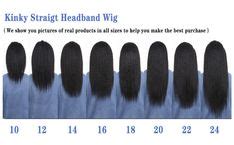Why Wigs and Hair Pieces Matter
Transforming your look has never been easier or more versatile. Wigs and hair pieces empower you to express yourself and experiment with your style without committing to permanent changes. They offer a myriad of benefits, from covering hair loss or thinning to enhancing volume and adding a touch of drama.

The Market Size and Growth: A Booming Industry
The global wigs and hair pieces market size was valued at USD 12.3 billion in 2021 and is projected to grow exponentially, reaching USD 18.8 billion by 2028. This surge is attributed to rising demand for non-surgical hair replacement solutions, increasing fashion consciousness, and advances in hair technology.
Types of Wigs and Hair Pieces
- Full Lace Wigs: Intricately constructed with lace that mimics the scalp, these wigs provide the most natural and undetectable look.
- Lace Front Wigs: Similar to full lace wigs, these offer a lace hairline that blends seamlessly with your skin, creating the illusion of natural hair growth.
- Human Hair Wigs: Made from 100% human hair, these wigs are highly durable and offer a realistic feel and movement.
- Synthetic Hair Wigs: Crafted from synthetic fibers, these wigs are more affordable and come in a wider range of colors and styles.
- Toppers: Designed to cover the crown or conceal thinning areas, toppers are smaller hair pieces that add volume and coverage.
- Hair Extensions: Strands of hair that can be attached to your natural hair for added length, volume, or color.
- Bangs: Hair pieces that frame the face and can transform your hairstyle instantly.
Health and Safety Considerations
When choosing wigs and hair pieces, it’s crucial to prioritize health and safety.
- Consult a dermatologist: If you experience hair loss or thinning, consult a dermatologist to identify underlying medical conditions.
- Use hypoallergenic materials: Synthetic wigs made from high-quality materials minimize the risk of allergic reactions.
- Avoid tight fits: Prolonged use of tight wigs can damage your natural hair and scalp.
How to Choose the Right Wig or Hair Piece
1. Determine Your Needs: Identify your specific hair concerns, whether it’s hair loss, thinning, or the desire for a new style.
2. Choose the Type: Consider the type of wig or hair piece that best suits your needs, from full lace wigs for a natural look to toppers for targeted coverage.
3. Match Your Features: Select a wig or hair piece that complements your face shape, skin tone, and eye color.
4. Consider the Maintenance: Factor in the level of maintenance required, including washing, styling, and storage.
5. Seek Professional Help: If you’re uncertain, consult a hairstylist or wig expert for personalized advice and assistance.
Tips and Tricks
- Blend into your hairline: Use a hairline powder or concealer to camouflage the transition between your natural hair and the wig.
- Style it up: Experiment with different hairstyles, such as braids, buns, or curls, to enhance the versatility of your wig.
- Maintain it properly: Follow the manufacturer’s instructions for washing, drying, and storing your wig to extend its lifespan.
Common Mistakes to Avoid
- Choosing the Wrong Type: Selecting a wig or hair piece that doesn’t meet your specific needs can lead to discomfort or an unnatural appearance.
- Over-Styling: Excessive heat styling, chemical treatments, or excessive brushing can prematurely damage wigs and hair pieces.
- Poor Maintenance: Neglecting proper care can deteriorate the quality and appearance of the hair.
The Innovative Applications of Wigs and Hair Pieces
Medical Applications:
* Covering hair loss due to cancer treatments or alopecia
* Enhancing self-image and confidence in patients
Fashion and Entertainment:
* Creating dramatic hairstyles and personas on stage or screen
* Expressing individuality and personal style
* Enhancing the overall appearance of models and performers
Convenience and Accessibility:
* Offering a temporary solution for hair emergencies, such as bad hair days or events
* Providing flexibility to change hairstyles on the go
* Empowering people to explore different looks without permanent commitment
Conclusion
Wigs and hair pieces are a versatile and transformative tool that can enhance your confidence and self-expression. By understanding the different types, choosing the right one for your needs, and following proper care and maintenance, you can harness the power of these hair solutions to unlock endless possibilities.
Table 1: Types of Wigs and Their Benefits
| Type of Wig | Benefits |
|---|---|
| Full Lace Wig | Most natural-looking, undetectable hairline |
| Lace Front Wig | Natural hairline, blends seamlessly |
| Human Hair Wig | Durable, realistic feel and movement |
| Synthetic Hair Wig | Affordable, wide range of colors and styles |
| Topper | Adds volume and coverage, conceals thinning areas |
| Hair Extensions | Lengthens, thickens, or adds color to natural hair |
| Bangs | Frames the face, transforms hairstyles instantly |
Table 2: Health and Safety Considerations
| Consideration | Tips |
|---|---|
| Hair Loss | Consult a dermatologist to identify underlying medical conditions |
| Allergic Reactions | Use hypoallergenic materials in wigs and hair pieces |
| Tight Fits | Avoid wearing wigs that are too tight to prevent hair damage |
Table 3: How to Choose the Right Wig or Hair Piece
| Factor | Considerations |
|---|---|
| Needs | Identify your hair concerns, such as hair loss or thinning |
| Type | Choose the type that best suits your needs, from full lace wigs to toppers |
| Features | Match the wig or hair piece to your face shape, skin tone, and eye color |
| Maintenance | Consider the level of maintenance required |
| Professional Help | Seek advice from a hairstylist or wig expert for personalized assistance |
Table 4: Common Mistakes to Avoid
| Mistake | Consequences |
|---|---|
| Choosing the Wrong Type | Discomfort, unnatural appearance |
| Over-Styling | Premature damage to wigs and hair pieces |
| Poor Maintenance | Deteriorated quality and appearance |
